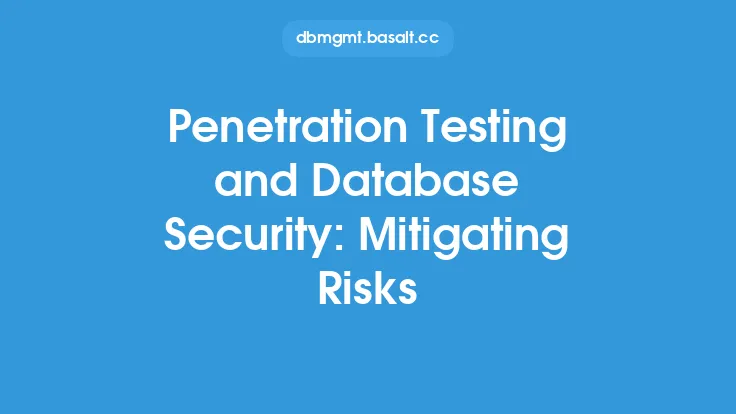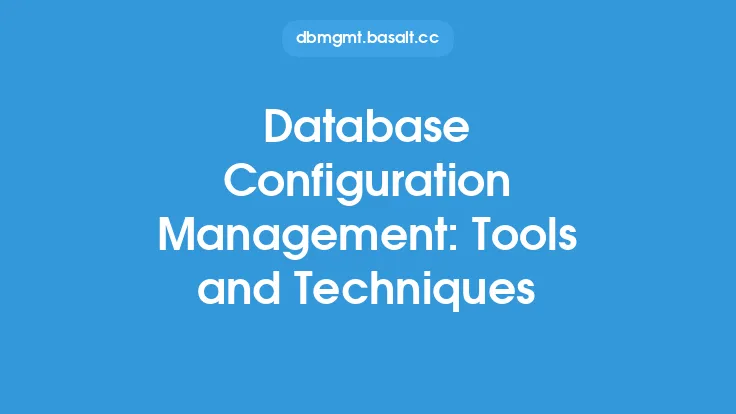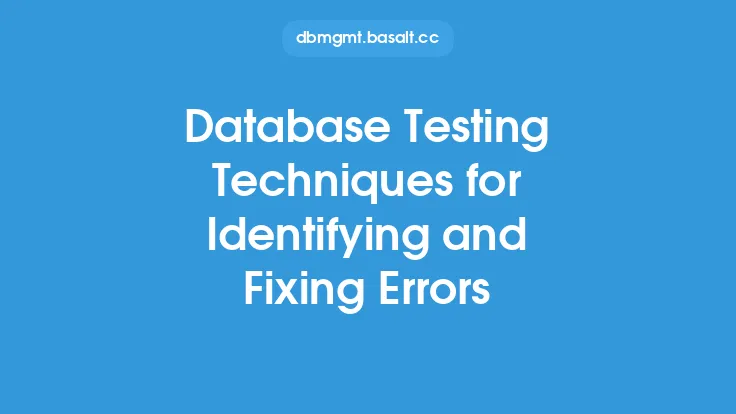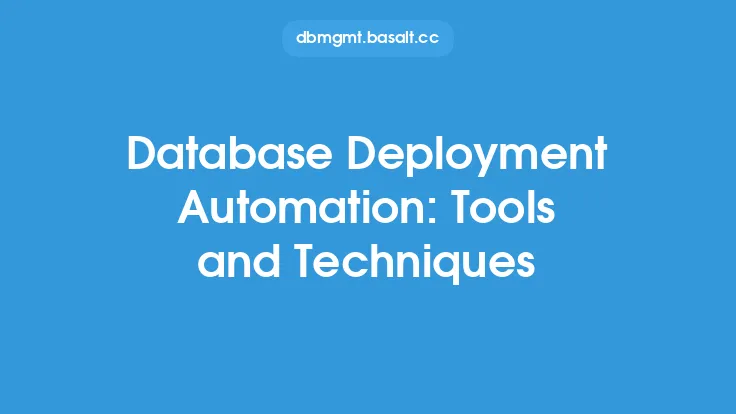Database penetration testing is a crucial aspect of ensuring the security and integrity of an organization's database systems. It involves simulating real-world attacks on the database to identify vulnerabilities, weaknesses, and potential entry points that an attacker could exploit. To perform effective database penetration testing, various tools and techniques are employed. In this article, we will delve into the different database penetration testing tools and techniques used to test the security of database systems.
Introduction to Database Penetration Testing Tools
Database penetration testing tools are software applications designed to simulate attacks on database systems, helping organizations identify and remediate vulnerabilities before they can be exploited by malicious actors. These tools can be categorized into several types, including network scanning tools, vulnerability scanning tools, password cracking tools, and SQL injection tools. Each type of tool serves a specific purpose in the penetration testing process, and they are often used in combination to achieve comprehensive testing.
Network Scanning Tools
Network scanning tools are used to identify open ports, services, and protocols on a database system. They help penetration testers to discover potential entry points that an attacker could use to gain access to the database. Popular network scanning tools include Nmap, Nessus, and OpenVAS. These tools use various techniques, such as TCP SYN scanning, UDP scanning, and ICMP scanning, to gather information about the database system's network configuration.
Vulnerability Scanning Tools
Vulnerability scanning tools are designed to identify known vulnerabilities in a database system. They use databases of known vulnerabilities to scan the system for potential weaknesses. Popular vulnerability scanning tools include Nessus, OpenVAS, and Qualys. These tools can identify vulnerabilities in the database management system, operating system, and other components of the database infrastructure.
Password Cracking Tools
Password cracking tools are used to identify weak passwords used by database administrators, users, or applications. These tools use various techniques, such as dictionary attacks, brute-force attacks, and rainbow table attacks, to crack passwords. Popular password cracking tools include John the Ripper, Hydra, and Medusa. Password cracking tools are essential in penetration testing, as weak passwords can provide an easy entry point for attackers.
SQL Injection Tools
SQL injection tools are designed to simulate SQL injection attacks on a database system. They help penetration testers to identify vulnerabilities in the database's input validation and sanitization mechanisms. Popular SQL injection tools include SQLMap, Burp Suite, and ZAP. These tools use various techniques, such as error-based SQL injection, union-based SQL injection, and blind SQL injection, to exploit vulnerabilities in the database system.
Techniques Used in Database Penetration Testing
In addition to using various tools, database penetration testers employ several techniques to simulate real-world attacks. These techniques include:
- Reconnaissance: Gathering information about the database system, including its configuration, users, and permissions.
- Enumeration: Identifying potential vulnerabilities and weaknesses in the database system.
- Exploitation: Exploiting identified vulnerabilities to gain access to the database system.
- Privilege escalation: Escalating privileges to gain higher levels of access to the database system.
- Data extraction: Extracting sensitive data from the database system.
- Denial of service: Simulating denial-of-service attacks to test the database system's availability and resilience.
Manual Testing Techniques
Manual testing techniques are used in conjunction with automated tools to perform comprehensive database penetration testing. These techniques include:
- Manual SQL injection testing: Manually injecting SQL code into the database system to identify vulnerabilities.
- Manual password cracking: Manually attempting to crack passwords using various techniques, such as dictionary attacks and brute-force attacks.
- Manual network scanning: Manually scanning the network to identify open ports, services, and protocols.
Automated Testing Tools
Automated testing tools are used to perform repetitive tasks, such as vulnerability scanning and password cracking. These tools include:
- Vulnerability scanners: Automated tools that scan the database system for known vulnerabilities.
- Password crackers: Automated tools that attempt to crack passwords using various techniques.
- SQL injection tools: Automated tools that simulate SQL injection attacks on the database system.
Best Practices for Using Database Penetration Testing Tools and Techniques
To get the most out of database penetration testing tools and techniques, several best practices should be followed:
- Use a combination of tools and techniques: Using a combination of automated tools and manual testing techniques provides comprehensive testing.
- Test regularly: Regular testing helps to identify vulnerabilities and weaknesses before they can be exploited by attackers.
- Use realistic scenarios: Using realistic scenarios helps to simulate real-world attacks and identify potential vulnerabilities.
- Keep tools and techniques up-to-date: Keeping tools and techniques up-to-date ensures that the latest vulnerabilities and weaknesses are identified.
Conclusion
Database penetration testing is a critical aspect of ensuring the security and integrity of an organization's database systems. Various tools and techniques are used to simulate real-world attacks, identify vulnerabilities, and remediate weaknesses. By using a combination of automated tools and manual testing techniques, organizations can perform comprehensive database penetration testing and ensure the security of their database systems. Remember, database penetration testing is an ongoing process that requires regular testing and evaluation to stay ahead of emerging threats and vulnerabilities.





